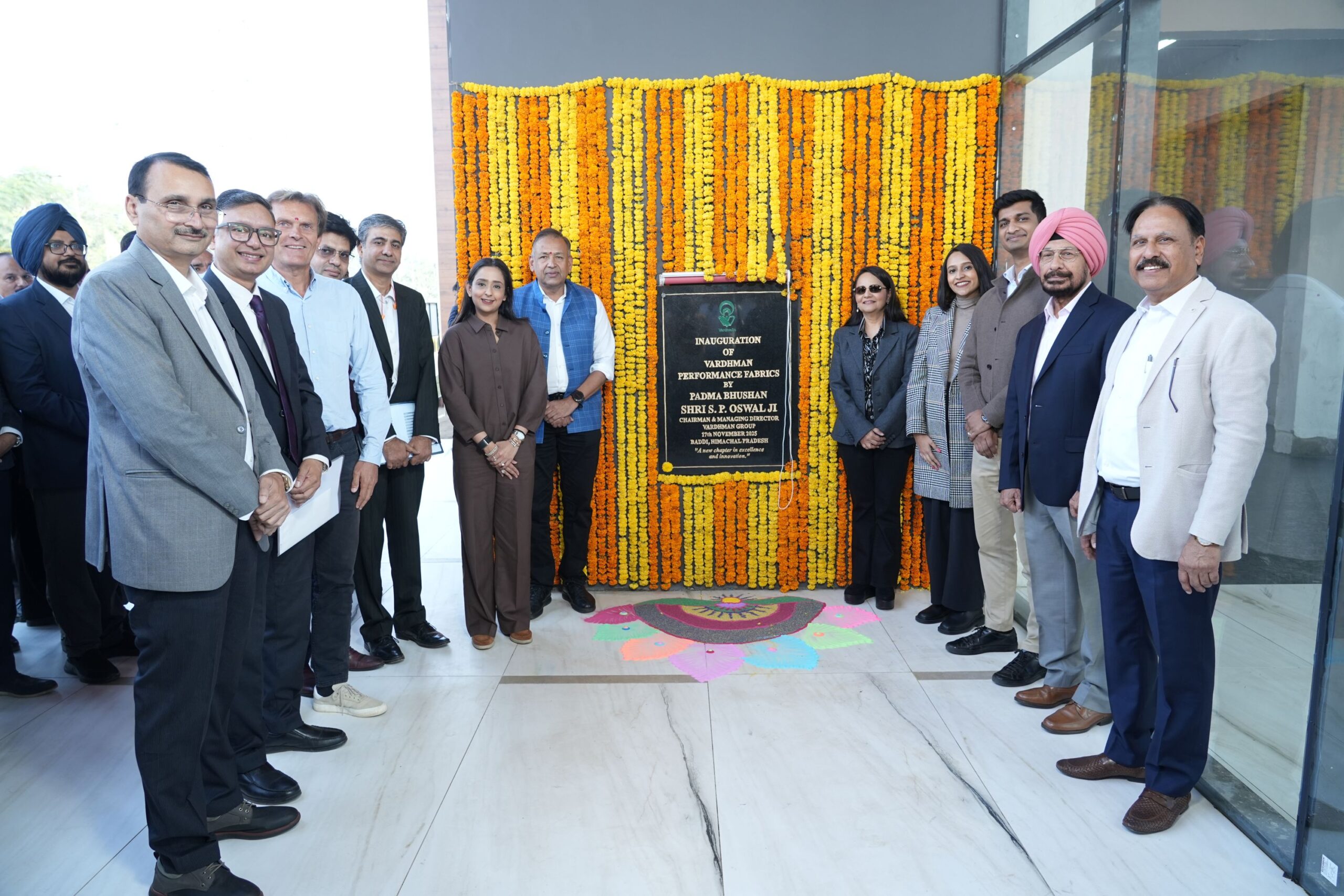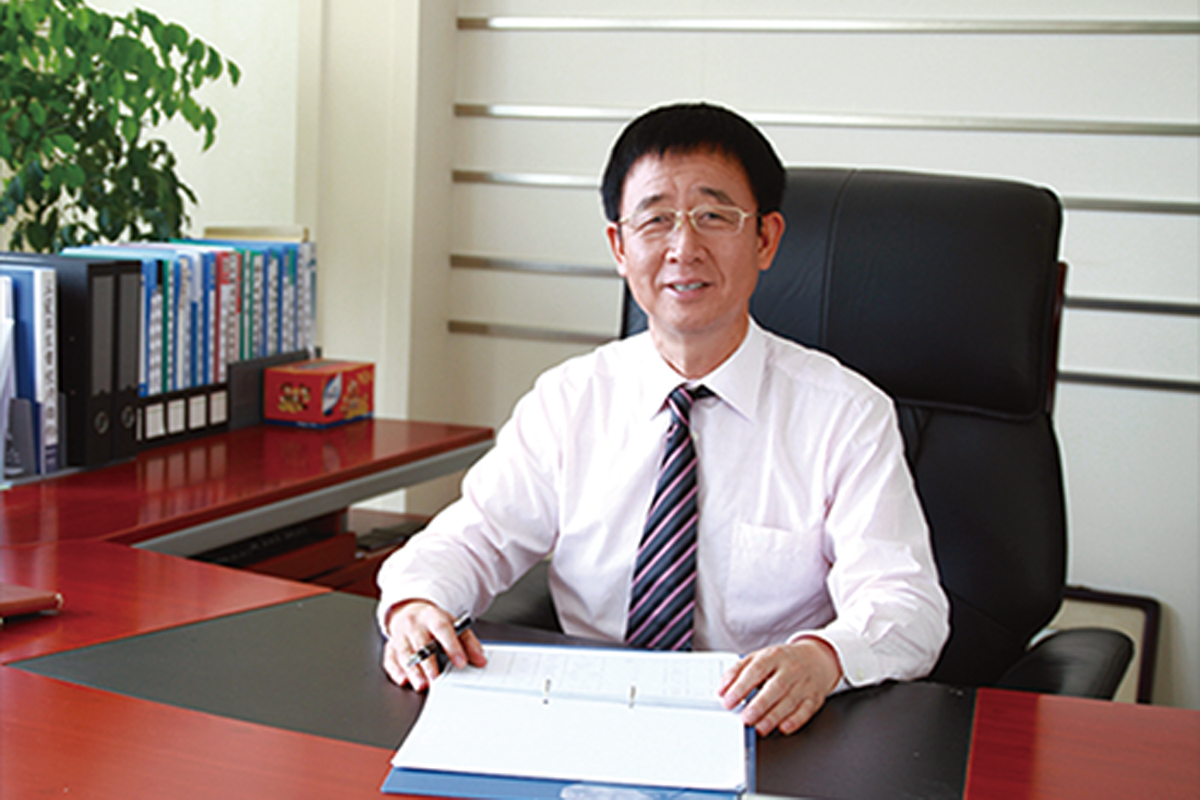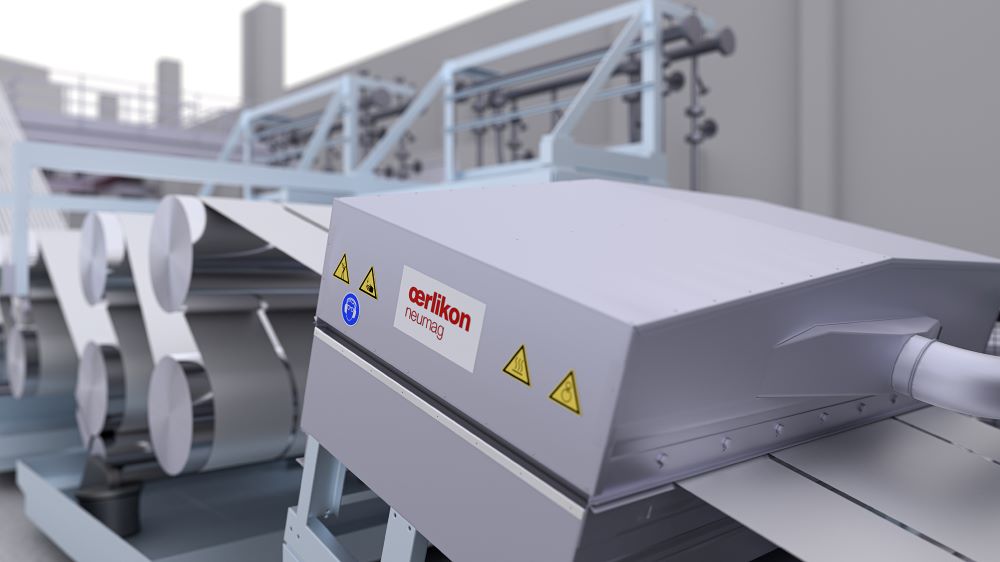For more than five decades, Vardhman Textiles Limited has stood as India’s most trusted symbol of textile engineering excellence. With over 1.2 million spindles and one of the country’s largest portfolios of processed cotton and blended fabrics, the group has long dominated the cotton value chain. But in a rapidly evolving global textile landscape, where man-made fibres account for nearly 70% of global textile consumption and performance wear continues to outpace every category, legacy alone is no longer enough. The future belongs to those willing to embrace new materials, new technologies, and new consumer behavior.
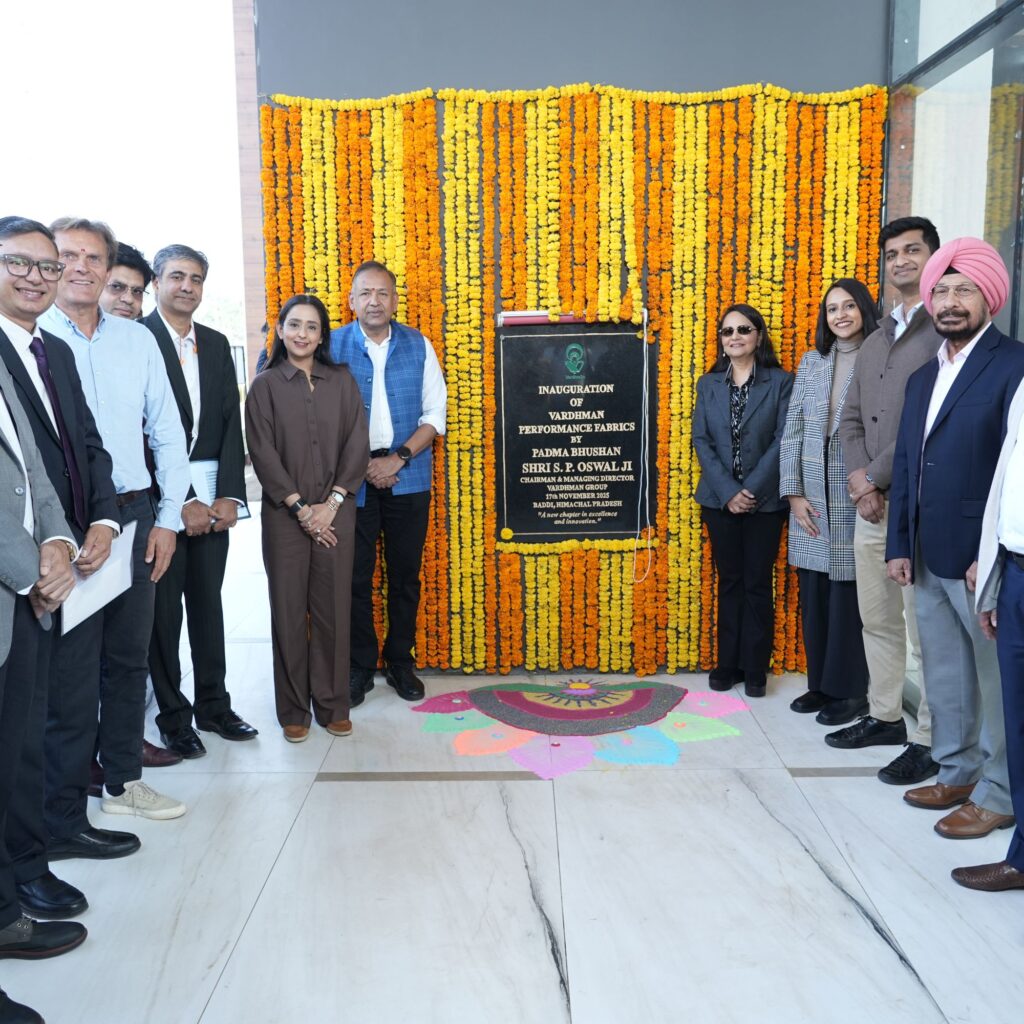
That future arrived in Baddi with the inauguration of Vardhman Performance Fabrics (VPF), a state-of-the-art facility that marks Vardhman’s strategic leap into the world of synthetics and technical textiles. What began as a vision is now a fully operational high-technology plant capable of producing some of the most advanced fabrics in the global MMF market, stretch, coated, delicate, and fine denier constructions that historically came from Taiwan, Korea, China, or Japan. Today, they can be made in India, at scale, under Vardhman’s banner.
“This is not just another plant,” says Mrs. Suchita Jain, Vice Chairman and Joint Managing Director of Vardhman Textiles. “It is the beginning of an entirely new chapter in Vardhman’s legacy, and a milestone for India’s textile capability. We have always believed that India can become a global sourcing base not only for cotton but for performance fabrics as well. VPF is our commitment to that belief.”

From Cotton Excellence to MMF Leadership: The Strategic Pivot
The move into synthetics may look bold, but it was rooted in rigorous market understanding. When Ms. Sagrika Vir, Executive Director, joined Vardhman and began studying the business, one insight emerged repeatedly: Vardhman was synonymous with cotton, but global demand was shifting firmly toward man-made fibres and performance fabrics. “Cotton is our DNA,” she admits, “but everywhere I looked, the message was loud, synthetics are growing faster, and India has a glaring gap in this space.”

Before making any decision, Sagrika and her team embarked on a global learning journey. They visited mills and technology hubs across Taiwan, Korea, Japan, and China, seeking to understand not just machinery, but the science, precision, and customer expectations behind performance fabrics. “We did not assume. We listened. We asked endless questions. And what we discovered was a very clear market gap, India had no large-scale, organized player consistently producing high-quality synthetics and performance wear. That was our Eureka moment,” she recalls.
The team’s detailed market dipstick reinforced the opportunity. The Indian synthetic fabric market is projected to double by the end of the decade. Global performance wear is much bigger, and growing at an unprecedented pace driven by athleisure, outdoor apparel, and functional daily wear. Customers, from domestic garmenters to global sportswear brands,confirmed that they needed alternatives to China, and they needed them quickly.
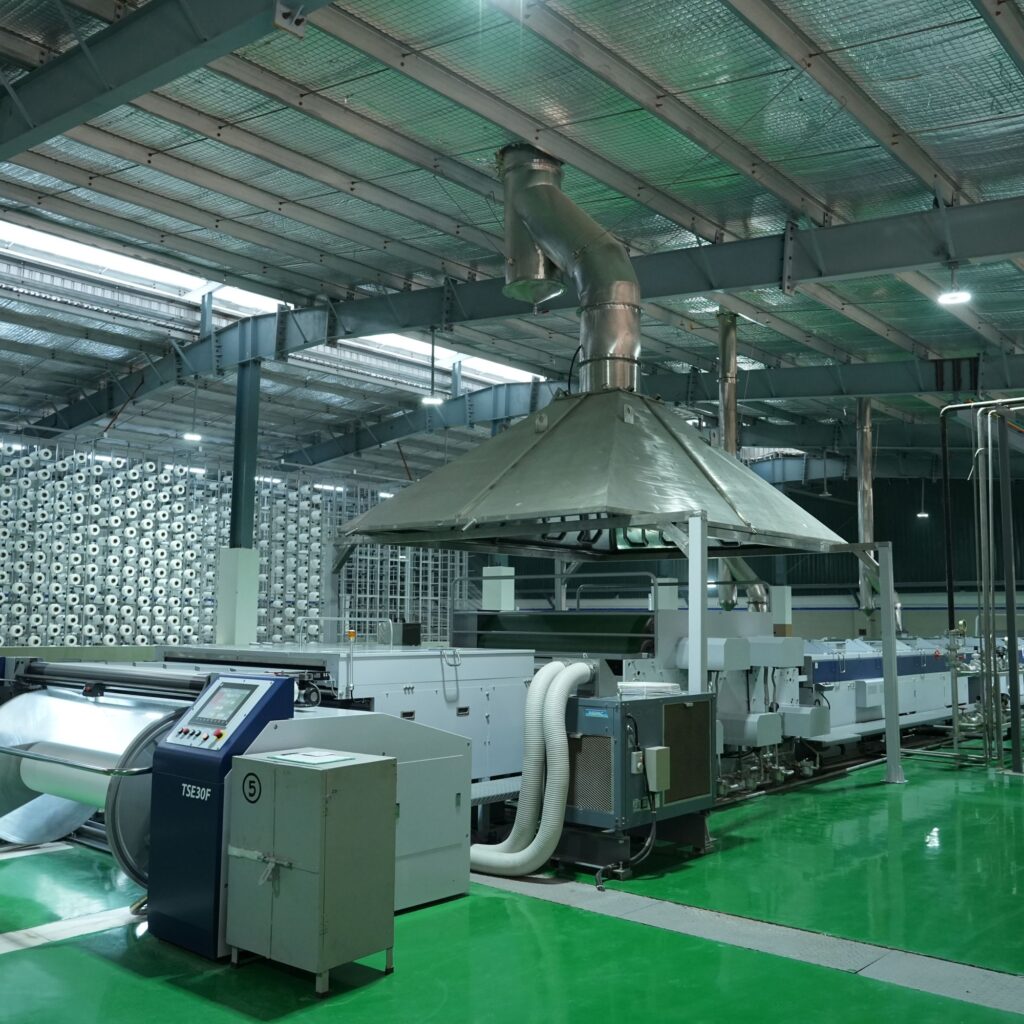
With these insights, the team presented its proposal to the Board. “It was certainly a shift outside our historical comfort zone,” says Sagrika, “but our Chairman and Board showed extraordinary openness. They challenged us with difficult questions, but once satisfied, they gave us their full support. This willingness to take calculated risk is what has enabled VPF to come alive.”
Engineering a World-Class MMF Facility: A Story of Precision, Speed, and Scale
The facility that now stands in Baddi is a testament to engineering clarity and disciplined execution. Less than a year ago, the land was empty; today, it houses one of India’s most advanced MMF weaving and processing plants. Under the leadership of Mr. Mukesh Saxena, CGM – Fabric Operations, Vardhman assembled a technology portfolio that rivals the best in East Asia.
“From day one, we decided we would not compromise,” Saxena explains. “Every machine, every layout, every technology choice had to meet global benchmarks, not just Indian ones.”

The weaving section is anchored by high-speed water-jet looms engineered to handle everything from ultra-fine filaments to stretch fabrics. These looms are wider and more flexible than conventional configurations, capable of maintaining fabric width even after processing,a capability critical for performance wear. “India has hardly produced such fabrics domestically,” Saxena notes. “We wanted to change that.”
Equally impressive is the coating division. The plant houses one of the country’s first double-head coating machines capable of both solvent-based and water-based applications. This enables VPF to create fabrics with advanced characteristics, breathability, waterproofing, wind resistance, integral to activewear and outdoor categories. “This kind of coating capability is almost non-existent in India,” he adds. “We wanted to ensure we offered customers a fully integrated solution.”
Together, these technologies position VPF as a high-volume platform that significantly expands Vardhman’s capacity. With Phase 1 operational, the group’s total capacity across cotton and MMF fabrics moves close to 240 million meters per annum, making Vardhman one of the largest fabric producers in the world under one management.
Building Capability from the Ground Up
What makes VPF remarkable is not only its machinery, but the speed at which capability was built. Vardhman had decades of experience with air-jet, rapier, and jacquard weaving, but almost no experience with water-jet technology. MMF dyeing and finishing operate on completely different chemistry, cycle times, and process control compared to cotton. The learning curve was steep.
Yet Saxena and his team embraced the challenge. Key employees were sent to Japan for specialized training. New technologists from Taiwan and Korea,who had spent years in synthetic processing companies,joined the team. Vardhman’s in-house training center, widely regarded as one of India’s best, became the hub for skilling fresh recruits.
“We knew we were starting from scratch,” says Saxena. “But we also knew that with the right experts and the right internal culture, we could build this capability faster than anyone expected.”
That confidence proved accurate. Within months of trial runs, the plant began producing lakhs of meters of flawless fabric. Samples sent to customers drew praise for finish, consistency, and performance. “We are now operating with very high efficiency,” Saxena confirms. “And we are just getting started.”
Customer-Centricity as a Design Philosophy
One of the defining characteristics of VPF is the involvement of global customers right from the conceptual stage. Brands such as Decathlon engaged deeply with Vardhman’s teams, sharing technical needs, fabric samples, and performance parameters.
“This is the first plant in our history where a customer was involved from day zero,” says Sagrika. “It completely changed the way we made decisions,from machine selection to process flexibility.”
This collaborative model ensured that VPF was not just capable of running MMF fabrics, but capable of running the right MMF fabrics,those aligned with global demand cycles, performance trends, and customer expectations.
A senior representative from Decathlon, speaking at the inauguration, emphasized how this plant would not only strengthen their partnership with Vardhman but also shape India’s broader capability in performance wear. It is rare for a customer to participate so actively in a supplier’s new investment,but that is precisely what makes VPF unique.
Sustainability: Not an Agenda, But a Process
In the world of performance textiles, sustainability is no longer optional,it is mandatory. And for Vardhman, sustainability is embedded into every decision, not layered afterward.
Sustainable features have been given paramount importance while selecting machines. The processing lines are built around low-liquor-ratio dyeing machines designed to minimize water usage, with cycle times optimized for polyester and nylon.
“Our focus is on building long-term, environmentally responsible systems, not quick fixes,” says Sagrika. Much of the raw material is recycled polyester, and the team is closely tracking developments in textile-to-textile recycling. Automated dye and chemical dispensing reduces wastage. The plant’s design incorporates plans for recycling water from water-jet looms once production stabilizes at scale.
Vardhman also prioritizes ZDHC-compliant chemicals and consistently chooses machine configurations that reduce water, energy, and heat consumption,even when those choices require higher capital investment. “We have committed as a group to becoming carbon neutral and eventually carbon positive,” explains Mrs. Suchita Jain. “VPF is fully aligned with that vision.”
The Bigger Picture: How VPF Shapes Vardhman’s Future
With the launch of VPF, Vardhman is no longer just India’s largest cotton-centric textile group. It is now one of the few companies capable of offering yarns and fabrics across cotton, synthetics, blends, yarn-dyed, printed, stretch, and performance categories,under a single integrated umbrella.
“Our vision,” says Mrs. Jain, “is to become a one-stop global sourcing base. If a customer wants cotton, we are there. If they want performance wear, we are there. If they want blends, technical finishes, or coated fabrics,we will be there. That is the future of Vardhman.”
Phase 2 and Phase 3 expansions are already in the planning pipeline, and the team expects to double performance fabric capacity within the next two to three years. With garmenting in India expanding rapidly and global brands diversifying their supply chains beyond China, the timing could not be more ideal.
A Seamlessly Orchestrated Inauguration
The inauguration itself reflected the precision and professionalism that Vardhman is known for. The event was meticulously curated and led by Mr. Mukesh Bansal, Executive Vice President – Marketing, whose warm yet sharp introductory remarks set the tone for the day. From welcoming the company’s senior leadership, distinguished guests, global brand partners, technology suppliers, and engineering teams, to ensuring that every attendee felt personally acknowledged, Bansal orchestrated the proceedings with effortless clarity and charm.
His role extended beyond hosting; he designed the entire experience, including a high-quality panel discussion with Mrs. Suchita Jain, Ms. Sagrika Vir, and Mr. Mukesh Saxena, to give guests a transparent view into the philosophy, technology choices, and future roadmap of Vardhman Performance Fabrics. Conducted in an interactive Q&A format, the panel brought out candid insights and grounded reflections from the senior leadership, offering visitors a rare inside look at the strategic thinking that shaped VPF. With seamless coordination, thoughtful curation of content, and an atmosphere that blended openness with celebration, the event stood as a reflection of the very values VPF represents: professionalism, precision, collaboration, and vision.
A New Era Begins
Vardhman Performance Fabrics is more than a factory. It is the embodiment of Vardhman’s willingness to unlearn, relearn, and rebuild capabilities from the ground up. It is a showcase of India’s potential to compete head-on with East Asian MMF leaders. And it is a signal to global brands that India is ready,not as an alternative, but as a partner of choice,for performance textiles.
From cotton leadership to performance innovation, the Vardhman story has entered an ambitious new chapter,and VPF is its bold opening line.


